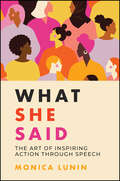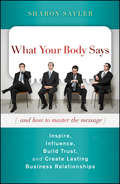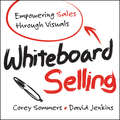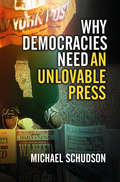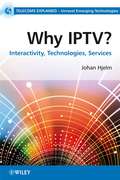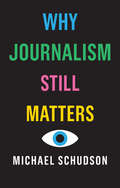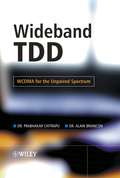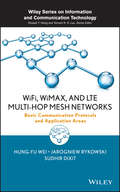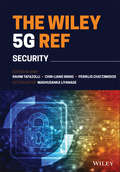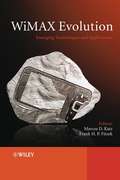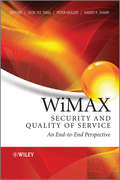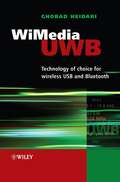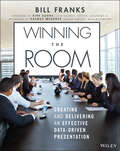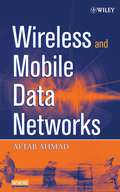- Table View
- List View
What She Said: #1 Award Winner: The Art of Inspiring Action through Speech
by Monica Lunin**Winner of the Communications and Sales Book of the Year and Winner of Cover Design at the Australian Business Book Awards 2022**Learn how spoken words can change a mind, a community and the world with this collection of remarkable speeches by women What She Said is an inspiring collection of speeches from passionate and persuasive women from around the world and throughout history. The included speakers come from diverse cultural and ethnic backgrounds, ages, and education levels, demonstrating how women from all walks of life can use the power of speech to bring change. Author Monica Lunin has curated and analysed 40 of the greatest speeches made by strong and empowering women from all around the world. From Queen Elizabeth I to Maya Angelou, Greta Thunberg, Julia Gillard, and Michelle Obama, What She Said shows not only what was said but also how the speech worked and why it was effective. In this insightful exploration of female wit, persuasion, and leadership, you’ll find an extract of the speech, a biography of the speaker and a breakdown of the qualities that made it so remarkable. You’ll learn how these women: inspired, moved, and persuaded an audience understood and empathised with a crowd effectively argued a position opened hearts and minds shared thoughts and insights. Across 10 chapters, each representing a different theme—from inspiration to activism to storytelling—What She Said will teach you to harness and leverage the power of the spoken word, offering the voices and tools to help you bring about the change you want to see in your world.
What She Said: #1 Award Winner: The Art of Inspiring Action through Speech
by Monica Lunin**Winner of the Communications and Sales Book of the Year and Winner of Cover Design at the Australian Business Book Awards 2022**Learn how spoken words can change a mind, a community and the world with this collection of remarkable speeches by women What She Said is an inspiring collection of speeches from passionate and persuasive women from around the world and throughout history. The included speakers come from diverse cultural and ethnic backgrounds, ages, and education levels, demonstrating how women from all walks of life can use the power of speech to bring change. Author Monica Lunin has curated and analysed 40 of the greatest speeches made by strong and empowering women from all around the world. From Queen Elizabeth I to Maya Angelou, Greta Thunberg, Julia Gillard, and Michelle Obama, What She Said shows not only what was said but also how the speech worked and why it was effective. In this insightful exploration of female wit, persuasion, and leadership, you’ll find an extract of the speech, a biography of the speaker and a breakdown of the qualities that made it so remarkable. You’ll learn how these women: inspired, moved, and persuaded an audience understood and empathised with a crowd effectively argued a position opened hearts and minds shared thoughts and insights. Across 10 chapters, each representing a different theme—from inspiration to activism to storytelling—What She Said will teach you to harness and leverage the power of the spoken word, offering the voices and tools to help you bring about the change you want to see in your world.
What Your Body Says (And How to Master the Message): Inspire, Influence, Build Trust, and Create Lasting Business Relationships
by Sharon SaylerTrain your body to communicate with confidence and clarity-have your body match what your mouth says... The popular phrase "leading from influence" takes for granted that influence derives chiefly from verbal communication. However, communication is about more than words. To get to the next level in your career, you must communicate with your entire self. What Your Body Says gives you the straight-up "how-to" on unifying what you say with what you do, allowing you to better connect with other people and reach your full leadership potential. It gives you a clear and simple process to follow, all drawn from an intense study of how language impacts people's lives and emotions. Filled with useful tools, strategies, and techniques, this book gives you the key to Speak intelligently while looking smart, engaging and real Deliver unpleasant messages without pain or guilt Having a committee meeting and getting something done And more Written by Sharon Sayler, a highly accomplished expert in marketing, presentations, and body language, What Your Body Says is the only guide you need to achieve the competitive edge in your personal and business communication style.
What Your Body Says (And How to Master the Message): Inspire, Influence, Build Trust, and Create Lasting Business Relationships
by Sharon SaylerTrain your body to communicate with confidence and clarity-have your body match what your mouth says... The popular phrase "leading from influence" takes for granted that influence derives chiefly from verbal communication. However, communication is about more than words. To get to the next level in your career, you must communicate with your entire self. What Your Body Says gives you the straight-up "how-to" on unifying what you say with what you do, allowing you to better connect with other people and reach your full leadership potential. It gives you a clear and simple process to follow, all drawn from an intense study of how language impacts people's lives and emotions. Filled with useful tools, strategies, and techniques, this book gives you the key to Speak intelligently while looking smart, engaging and real Deliver unpleasant messages without pain or guilt Having a committee meeting and getting something done And more Written by Sharon Sayler, a highly accomplished expert in marketing, presentations, and body language, What Your Body Says is the only guide you need to achieve the competitive edge in your personal and business communication style.
Whiteboard Selling: Empowering Sales Through Visuals
by Corey Sommers David JenkinsCreate compelling whiteboard presentations to engage your customers and win their business Whiteboard Selling offers a step-by-step approach to transforming your message and selling style by using powerful visual stories that inspire and engage customers and prospects. Free your sales force from relying on slides and other static sales tools during the sales process. Whiteboard Selling offers practical guidance and skills to enable marketing and sales teams to quickly adopt visual story telling practices that apply to today's fast-moving, competitive selling environment. Explains how to take a sales message inventory Illustrates how to design your visual stories Empowers your sales force to tell the story and extend the reach of visual storytelling Through the power of technology and effective storytelling, you and your team can create and deliver effective presentations that engage your customers, hold their attention, and win their business. Whiteboard Selling shows you how.
Whiteboard Selling: Empowering Sales Through Visuals
by Corey Sommers David JenkinsCreate compelling whiteboard presentations to engage your customers and win their business Whiteboard Selling offers a step-by-step approach to transforming your message and selling style by using powerful visual stories that inspire and engage customers and prospects. Free your sales force from relying on slides and other static sales tools during the sales process. Whiteboard Selling offers practical guidance and skills to enable marketing and sales teams to quickly adopt visual story telling practices that apply to today's fast-moving, competitive selling environment. Explains how to take a sales message inventory Illustrates how to design your visual stories Empowers your sales force to tell the story and extend the reach of visual storytelling Through the power of technology and effective storytelling, you and your team can create and deliver effective presentations that engage your customers, hold their attention, and win their business. Whiteboard Selling shows you how.
Why Democracies Need an Unlovable Press
by Michael SchudsonJournalism does not create democracy and democracy does not invent journalism, but what is the relationship between them? This question is at the heart of this book by world renowned sociologist and media scholar Michael Schudson. Focusing on the U.S. media but seeing them in a comparative context, Schudson brings his understanding of news as at once a story-telling and fact-centered practice to bear on a variety of controversies about what public knowledge today is and what it should be. Should experts have a role in governing democracies? Is news melodramatic or is it ironic – or is it both at different times? In the title essay, Schudson even suggests that journalism serves the interests of free expression and democracy best when it least lives up to the demands of media critics for deep thought and analysis; passion for the sensational event may be news at its democratically most powerful. Lively, provocative, unconventional, and deeply informed by a rich understanding of journalism’s history, this work collects the best of Schudson’s recent writings, including several pieces published here for the first time.
Why Democracies Need an Unlovable Press
by Michael SchudsonJournalism does not create democracy and democracy does not invent journalism, but what is the relationship between them? This question is at the heart of this book by world renowned sociologist and media scholar Michael Schudson. Focusing on the U.S. media but seeing them in a comparative context, Schudson brings his understanding of news as at once a story-telling and fact-centered practice to bear on a variety of controversies about what public knowledge today is and what it should be. Should experts have a role in governing democracies? Is news melodramatic or is it ironic – or is it both at different times? In the title essay, Schudson even suggests that journalism serves the interests of free expression and democracy best when it least lives up to the demands of media critics for deep thought and analysis; passion for the sensational event may be news at its democratically most powerful. Lively, provocative, unconventional, and deeply informed by a rich understanding of journalism’s history, this work collects the best of Schudson’s recent writings, including several pieces published here for the first time.
Why IPTV?: Interactivity, Technologies, Services (Telecoms Explained #5)
by Johan HjelmFind out how modern IPTV technologies will change your experience of television. Internet Protocol Television (IPTV) is rapidly being deployed as a compliment service to existing distribution technologies. Why IPTV? traces the changes in Internet Protocol Television since the mid-1990s and examines what IPTV means today. The author analyzes what delivery of TV over an IP network means, both in terms of possibilities for new services, and in terms of the impact on the network and how it has to be managed. In addition, Why IPTV? helps you understand how introducing IPTV into the Web 2.0 world will impact the new services. It looks at the current trends in the consumer electronics industry as well as the network industry, and describes how the new technology can enhance and extend the existing business models in the TV industry, particularly in advertising; and also how it creates new possibilities, for instance, through personalization. Why IPTV? Interactivity, Technologies, Services: Provides an accessible introduction to IPTV. Covers the technology to build IPTV systems, and shows what lies beyond traditional business models and existing distribution technologies. Considers how IPTV technologies can exploit and change the current trends in consumer electronics and network industry. Explores how the merging of Web 2.0 and IPTV will open new opportunities for services. Addresses hot topics such as IPTV Interaction and Channel Switching, Networking and Streaming with Information Management Systems, Advertising and Personalization of IPTV. Why IPTV? will provide engineers in networking, TV broadcast companies, technology specialists in content creation companies and people in the IPTV industry (including management) with an engaging and insightful reference into Internet Protocol Television.
Why Journalism Still Matters
by Michael SchudsonCan we talk about the news media without proclaiming journalism either our savior or the source of all evil? It is not easy to do so, but it gets easier if we put the problems and prospects of journalism in historical and comparative perspective, view them with a sociological knowledge of how newsmaking operates, and see them in a political context that examines how political institutions shape news as well as how news shapes political attitudes and institutions. Adopting this approach, Michael Schudson examines news and news institutions in relation to democratic theory and practice, in relation to the economic crisis that affects so many news organizations today and in relation to recent discussions of “fake news.” In contrast to those who suggest that journalism has had its day, Schudson argues that journalism has become more important than ever for liberal democracies as the keystone institution in a web of accountability for a governmental system that invites public attention, public monitoring and public participation. For the public to be swayed from positions people have already staked out, and for government officials to respond to charges that they have behaved corruptly or unconstitutionally or simply rashly and unwisely, the source of information has to come from organizations that hold themselves to the highest standards of verification, fact-checking, and independent and original research, and that is exactly what professional journalism aspires to do.This timely and important defense of journalism will be of great value to anyone concerned about the future of news and of democracy.
Why Journalism Still Matters
by Michael SchudsonCan we talk about the news media without proclaiming journalism either our savior or the source of all evil? It is not easy to do so, but it gets easier if we put the problems and prospects of journalism in historical and comparative perspective, view them with a sociological knowledge of how newsmaking operates, and see them in a political context that examines how political institutions shape news as well as how news shapes political attitudes and institutions. Adopting this approach, Michael Schudson examines news and news institutions in relation to democratic theory and practice, in relation to the economic crisis that affects so many news organizations today and in relation to recent discussions of “fake news.” In contrast to those who suggest that journalism has had its day, Schudson argues that journalism has become more important than ever for liberal democracies as the keystone institution in a web of accountability for a governmental system that invites public attention, public monitoring and public participation. For the public to be swayed from positions people have already staked out, and for government officials to respond to charges that they have behaved corruptly or unconstitutionally or simply rashly and unwisely, the source of information has to come from organizations that hold themselves to the highest standards of verification, fact-checking, and independent and original research, and that is exactly what professional journalism aspires to do.This timely and important defense of journalism will be of great value to anyone concerned about the future of news and of democracy.
Wi-Fi Integration to the 4G Mobile Network
by André PérezThe adoption of smartphones has had as a corollary the use of services that require streaming, such as video streaming, which is a constraint for the 4G mobile network. The integration of the network of Wi-Fi hotspots deployed by the operators adds capacity to the 4G mobile network.The use of Wi-Fi technology in carrier networks is the result of developments coordinated by the IEEE, WFA and WBA standardization bodies. For its part, the 3GPP standardization body has been working to integrate Wi-Fi technology into the 4G mobile network.The first part of this book presents the characteristics of the Wi-Fi radio interface. The different IEEE 802.11b / g / n / ac physical layers characterize the implementation in the 2.4 GHz ISM frequency bands and U- NII at 5 GHz. The MAC layer defines a number of media access procedures such as scanning, associating, or transferring data.The second part of this book deals with the architecture of the 4G network based on the Wi-Fi interface. This architecture defines several models corresponding, on the one hand, to Wi-Fi access controlled or not, On the other hand, to a handover controlled by the network or by the mobile. The integration of Wi-Fi technology resulted in a redefinition of attachment and session set-up procedures.Smartphones have the ability to activate simultaneously the two radio interfaces, LTE and Wi-Fi, which allows to direct certain services to one and / or the other of the interfaces. The ANDSF and HotSpot 2.0 functions provide the mobile with rules for network selection and traffic control to determine which traffic is to be routed to what type of interface.
Wi-Fi Integration to the 4G Mobile Network
by André PérezThe adoption of smartphones has had as a corollary the use of services that require streaming, such as video streaming, which is a constraint for the 4G mobile network. The integration of the network of Wi-Fi hotspots deployed by the operators adds capacity to the 4G mobile network.The use of Wi-Fi technology in carrier networks is the result of developments coordinated by the IEEE, WFA and WBA standardization bodies. For its part, the 3GPP standardization body has been working to integrate Wi-Fi technology into the 4G mobile network.The first part of this book presents the characteristics of the Wi-Fi radio interface. The different IEEE 802.11b / g / n / ac physical layers characterize the implementation in the 2.4 GHz ISM frequency bands and U- NII at 5 GHz. The MAC layer defines a number of media access procedures such as scanning, associating, or transferring data.The second part of this book deals with the architecture of the 4G network based on the Wi-Fi interface. This architecture defines several models corresponding, on the one hand, to Wi-Fi access controlled or not, On the other hand, to a handover controlled by the network or by the mobile. The integration of Wi-Fi technology resulted in a redefinition of attachment and session set-up procedures.Smartphones have the ability to activate simultaneously the two radio interfaces, LTE and Wi-Fi, which allows to direct certain services to one and / or the other of the interfaces. The ANDSF and HotSpot 2.0 functions provide the mobile with rules for network selection and traffic control to determine which traffic is to be routed to what type of interface.
Wideband TDD: WCDMA for the Unpaired Spectrum
by Prabhakar Chitrapu3rd generation radio systems will be increasingly developed, deployed and operated in the years to come. TDD is one of two main approaches to implementing these 3G systems, so that there will be an increasing need for the engineering community to learn quickly and comprehensively about the TDD technology. As 3G systems become popular, the topics will no doubt be introduced to academic curricula and will also provide a basis for future research. This book provides comprehensive coverage of TDD. It is essentially a Radio Access Network technology and the book embraces the structure of the radio interface as well as the user equipment and network equipment. In addition, Wideband TDD also covers the connection of the TDD Radio Access Network to the 3G Core Network and public switched networks (PSTN) as well as public and private packet networks (Internet and Intranet). Services, applications and performance are also addressed. Finally, TDD is compared with other radio access technologies, namely FDD, TD-SCDMA and WLAN. TD-SCDMA is the Narrowband version of TDD in 3G, and WLAN standards address wireless computer communications. Although there are a number of books published on 3G and UMTS, most of the focus of these books has been on FDD component of 3G. Wideband TDD: Describes all aspects of TDD in a single comprehensive manner Addresses TDD technology, TDD systems and the TDD market place Discusses deployment scenarios and Radio Resource Management for TDD Provides a comparison of TDD with other radio access technologies, namely FDD, TD-SCDMA and wireless LANs This will prove an essential addition to the bookshelf of professional communication and software engineers, development engineers, technical marketing professionals, researchers in industry, wireless equipment vendors such as Siemens, Nokia and InterDigital, operators and service providers. It will also provide a comprehensive overview of TDD for postgraduates who are taking advanced courses in Mobile Wireless communications.
WiFi, WiMAX, and LTE Multi-hop Mesh Networks: Basic Communication Protocols and Application Areas (Information and Communication Technology Series, #96)
by Hung-Yu Wei Jarogniew Rykowski Sudhir DixitWifi, WiMAX, and Cellular Multihop Networks presents an overview of WiFi-based and WiMAX-based multihop relay networks. As the first text to cover IEEE 802.16j multihop hop relay technology, this revolutionary resource explores the latest advances in multi-hop and ad-hoc networking. Not only does this reference provide the technological aspects, but also the applications for the emerging technology and architectural issues. Ranging from introductory material to advanced topics, this guidebook is essential for engineers, researchers, and students interested in learning more about WiFi and WiMAX multihop relay networks.
WiFi, WiMAX, and LTE Multi-hop Mesh Networks: Basic Communication Protocols and Application Areas (Information and Communication Technology Series, #96)
by Hung-Yu Wei Jarogniew Rykowski Sudhir DixitWifi, WiMAX, and Cellular Multihop Networks presents an overview of WiFi-based and WiMAX-based multihop relay networks. As the first text to cover IEEE 802.16j multihop hop relay technology, this revolutionary resource explores the latest advances in multi-hop and ad-hoc networking. Not only does this reference provide the technological aspects, but also the applications for the emerging technology and architectural issues. Ranging from introductory material to advanced topics, this guidebook is essential for engineers, researchers, and students interested in learning more about WiFi and WiMAX multihop relay networks.
The Wiley 5G REF: Security
by Rahim Tafazolli Chin-Liang Wang Periklis Chatzimisios Madhusanka LiyanageFrom the Section Editor’s Foreword by Dr. Madhusanka Liyanage, University College Dublin, Ireland. The Wiley 5G Ref: Security offers a stellar collection of articles selected from the online-only Work, The Wiley 5G Reference. It aims to provide a solid educational foundation for researchers and practitioners in the field of 5G Security and Privacy to expand their knowledge base by including the latest developments in these disciplines. The book introduces the security landscape of 5G, and significant security and privacy risks associated with the 5G networks. Then, the security solutions for different segments of the 5G network, i.e., radio network, edge network, access network, and core network, are discussed. Since 5G is developed based on network softwarization, security threats associated with key network softwarization technologies such as SDN, NFV, NS, and MEC are also presented in detail. Then, the security issues related to the new 5G and IoT services are delivered. Finally, a detailed discussion on the privacy of 5G networks is presented by considering Datafied Society. Written by leading experts in security and privacy for the telecommunication network, this book is intended to provide additional learning opportunities for a wide range of readers, from graduate-level students to seasoned engineering professionals. We are confident that this book and the entire collection of selected articles will continue Wiley’s tradition of excellence in technical publishing and provide a lasting and positive contribution to the teaching and practice of security and privacy of 5G and beyond networks.
The Wiley 5G REF: Security
by Rahim Tafazolli Chin-Liang Wang Periklis Chatzimisios Madhusanka LiyanageFrom the Section Editor’s Foreword by Dr. Madhusanka Liyanage, University College Dublin, Ireland. The Wiley 5G Ref: Security offers a stellar collection of articles selected from the online-only Work, The Wiley 5G Reference. It aims to provide a solid educational foundation for researchers and practitioners in the field of 5G Security and Privacy to expand their knowledge base by including the latest developments in these disciplines. The book introduces the security landscape of 5G, and significant security and privacy risks associated with the 5G networks. Then, the security solutions for different segments of the 5G network, i.e., radio network, edge network, access network, and core network, are discussed. Since 5G is developed based on network softwarization, security threats associated with key network softwarization technologies such as SDN, NFV, NS, and MEC are also presented in detail. Then, the security issues related to the new 5G and IoT services are delivered. Finally, a detailed discussion on the privacy of 5G networks is presented by considering Datafied Society. Written by leading experts in security and privacy for the telecommunication network, this book is intended to provide additional learning opportunities for a wide range of readers, from graduate-level students to seasoned engineering professionals. We are confident that this book and the entire collection of selected articles will continue Wiley’s tradition of excellence in technical publishing and provide a lasting and positive contribution to the teaching and practice of security and privacy of 5G and beyond networks.
WiMAX Evolution: Emerging Technologies and Applications
by Marcos Katz Frank H. P. FitzekThis book presents the evolutionary and visionary developments of WiMAX! WiMAX Evolution: Emerging Technologies and Applications focuses on the future developments of WiMAX technology. The book discusses the evolutionary aspects of WiMAX, from the physical to the application layer, including visions from industry, standardization and research communities. Several chapters of the book will present very new and unique information as editors and their respective organizations are involved in ongoing international projects on WiMAX, developing advanced WiMAX techniques. The Editors’ in-house WiMAX test-beds enhance the book with privileged and seldom published information on practical issues. Key features: Presents evolutionary and visionary developments of WiMAX, motivating and inspiring readers to join and continue the developing work Contains chapters with previously unpublished material, including measurements on real WiMAX equipment and their validation, and introduction of robust header compression in WiMAX, and more Unique results on real WiMAX test-beds Covers WiMAX validation, novel scenarios, applications and business, advanced WiMAX architectures, WiMAX extensions, and WiMAX evolution and future developments Expert authorship with a balanced mix of contributions from highly regarded professionals from top research institutes, industry and academia This book is an invaluable resource for product developers, research and standardization engineers in industry, professors, research scientists and advanced students in academia. Technology managers and CTOs will also find this book insightful.
WiMAX Security and Quality of Service: An End-to-End Perspective
by Seok-Yee Tang Peter Müller Hamid R. SharifWiMAX is the first standard technology to deliver true broadband mobility at speeds that enable powerful multimedia applications such as Voice over Internet Protocol (VoIP), online gaming, mobile TV, and personalized infotainment. WiMAX Security and Quality of Service, focuses on the interdisciplinary subject of advanced Security and Quality of Service (QoS) in WiMAX wireless telecommunication systems including its models, standards, implementations, and applications. Split into 4 parts, Part A of the book is an end-to-end overview of the WiMAX architecture, protocol, and system requirements. Security is an essential element in the wireless world and Part B is fully dedicated to this topic. Part C provides an in depth analysis of QoS, including mobility management in WiMAX. Finally, Part D introduces the reader to advanced and future topics. One of the first texts to cover security, QoS and deployments of WiMAX in the same book. Introduces the primary concepts of the interdisciplinary nature of WiMAX security and QoS, and also includes discussion of hot topics in the field. Written for engineers and researchers, answering practical questions from industry and the experimental field in academia. Explains how WiMAX applications’ security and QoS are interconnected and interworked among the cross layers.
WiMAX Security and Quality of Service: An End-to-End Perspective
by Seok-Yee Tang Peter Muller Hamid SharifWiMAX is the first standard technology to deliver true broadband mobility at speeds that enable powerful multimedia applications such as Voice over Internet Protocol (VoIP), online gaming, mobile TV, and personalized infotainment. WiMAX Security and Quality of Service, focuses on the interdisciplinary subject of advanced Security and Quality of Service (QoS) in WiMAX wireless telecommunication systems including its models, standards, implementations, and applications. Split into 4 parts, Part A of the book is an end-to-end overview of the WiMAX architecture, protocol, and system requirements. Security is an essential element in the wireless world and Part B is fully dedicated to this topic. Part C provides an in depth analysis of QoS, including mobility management in WiMAX. Finally, Part D introduces the reader to advanced and future topics. One of the first texts to cover security, QoS and deployments of WiMAX in the same book. Introduces the primary concepts of the interdisciplinary nature of WiMAX security and QoS, and also includes discussion of hot topics in the field. Written for engineers and researchers, answering practical questions from industry and the experimental field in academia. Explains how WiMAX applications’ security and QoS are interconnected and interworked among the cross layers.
WiMedia UWB: Technology of Choice for Wireless USB and Bluetooth
by Ghobad HeidariUWB (ultra-wideband) has been investigated for many decades but only recently has it become commercially viable. With the advent of WiMedia UWB technology and its associated standard specifications, the stage is set for the next generation of WPAN applications to take root. WiMedia UWB focuses on the ECMA-368 standard. Both PHY layer and MAC sublayers specified in this standard are explained in great detail. The book offers not only the facts about the requirements of the standard, but also the motivation and logic behind them. To give a comprehensive perspective of the UWB technology to the reader, other interrelated topics are also examined in this book. These include the history of UWB and its recent standardization attempts; UWB applications and advantages; UWB spectrum allocation and regulations around the world; UWB platform clients: Certified Wireless USB (CW-USB), Bluetooth, and WLP (WiMedia Link layer Protocol, which enables Internet Protocol over UWB); as well as some important implementation issues and considerations. As the first application of WiMedia UWB, CW-USB is given a special and more comprehensive treatment. This book is ideal for any engineer or engineering managers who are expecting to either develop a solution based on UWB or to integrate it with other devices. It will also be of interest to researchers who require an overview or an interpretation of the technology. One of the first books to describe the WiMedia standards (PHY and MAC) in detail A comprehensive approach to de-obfuscating the entire WiMedia UWB technology, from the PHY through the MAC, the MAC clients, the applications, and the regulations Includes a description of the CW-USB standard and its relation to WiMedia MAC Provides an up-to-date view of the UWB spectrum allocations and associated regulations around the world Derived from hands-on experiences in WiMedia UWB standards and system development efforts.
Winning The Room: Creating and Delivering an Effective Data-Driven Presentation
by Bill FranksRevolutionize your data-driven presentations with this simple and actionable guide In Winning The Room: Creating and Delivering an Effective Data-Driven Presentation, analytics and data science expert Bill Franks delivers a practical and eye-opening exploration of how to present technical data and results to non-technical audiences in a live setting. Although framed with examples from the analytics and data science space, this book is perfect for anyone expected to present data-driven information to others. The book offers various specific tips and strategies that will make data-driven presentations much clearer, more intuitive, and easier to understand. Readers will discover: How to avoid common mistakes that undercut a presentation's credibility Instructive and eye-catching visuals that illustrate how to drive a presenter's points home and help the reader to retain the information Specific and actionable techniques to dramatically improve a presentation's clarity and impact Ideal for anyone expected to present to managers, executives, and other business leaders, Winning The Room is required reading for everyone seeking to improve the quality and efficacy of their data-driven presentations and communications.
Winning The Room: Creating and Delivering an Effective Data-Driven Presentation
by Bill FranksRevolutionize your data-driven presentations with this simple and actionable guide In Winning The Room: Creating and Delivering an Effective Data-Driven Presentation, analytics and data science expert Bill Franks delivers a practical and eye-opening exploration of how to present technical data and results to non-technical audiences in a live setting. Although framed with examples from the analytics and data science space, this book is perfect for anyone expected to present data-driven information to others. The book offers various specific tips and strategies that will make data-driven presentations much clearer, more intuitive, and easier to understand. Readers will discover: How to avoid common mistakes that undercut a presentation's credibility Instructive and eye-catching visuals that illustrate how to drive a presenter's points home and help the reader to retain the information Specific and actionable techniques to dramatically improve a presentation's clarity and impact Ideal for anyone expected to present to managers, executives, and other business leaders, Winning The Room is required reading for everyone seeking to improve the quality and efficacy of their data-driven presentations and communications.
Wireless and Mobile Data Networks
by Aftab AhmadWireless and Mobile Data Networks provides a single point of knowledge about wireless data technologies, including: * Comprehensive easy-to understand resource on wireless data technologies * Includes wireless media, data transmission via cellular networks, and network security * Provides a single point of knowledge about wireless data * Focuses on wireless data networks, wireless channels, wireless local networks, wide area cellular networks and wireless network security An Instructor Support FTP site is available from the Wiley editorial department.
